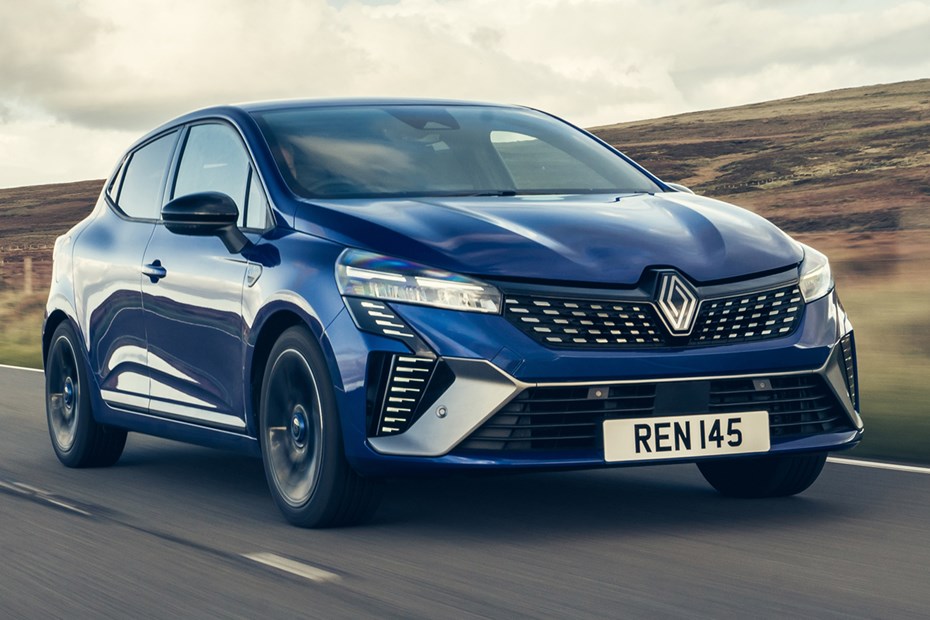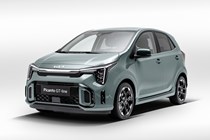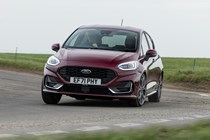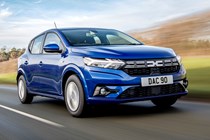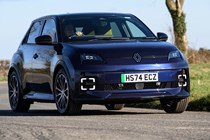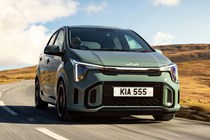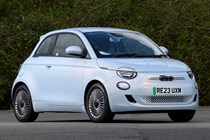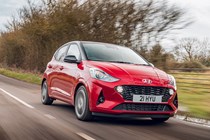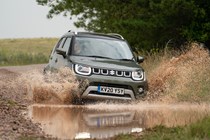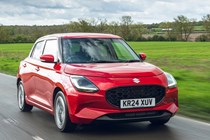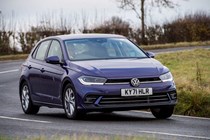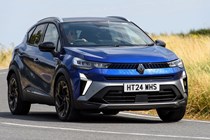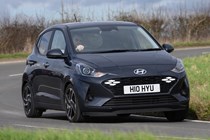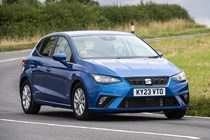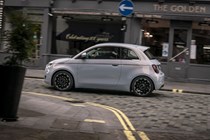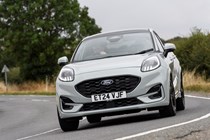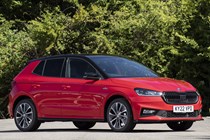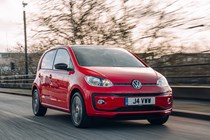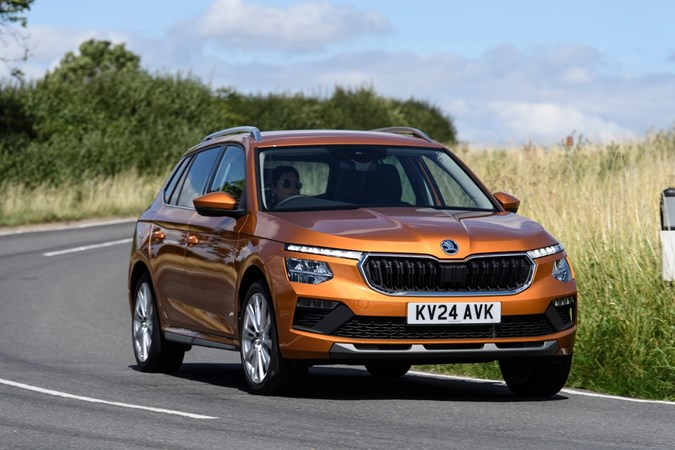After all the trials, tribulations and many long hours of practice to pass your driving test, a stamp of approval from your examiner means only one thing – time to work out what you’re going to buy as your first car. You’ve got a lot of options, but we’d recommend opting for a small car as your first to keep your up-front and running costs down.
That’s right, as a young newly passed, we’re afraid you’ll probably have to shelve the performance sports car dreams for the moment, as insurers could charge you premiums into the tens of thousands to run one, if they’ll even take your business at all. However, there are still plenty of brilliant new cars on the market for young drivers that won’t bust the bank to buy, finance or insure.
Enter the supermini – the long-standing first car champion. These light, dainty cars are ideal for young drivers: not powerful enough to cause trouble, which keeps insurers happy and costs down, yet still comfortable and fun to drive.
As an added bonus, modern superminis often come quite well equipped, despite their modest price tags. These days, even the smallest cars are loaded with must-have equipment, such as autonomous emergency braking, air conditioning and smartphone connectivity.
Scroll down for our top 10 list of the best first cars for new drivers. They’ve all been tested extensively by Parkers’ team of experts – and they all represent great value for money. If one catches your eye, head over to the Parkers new cars for sale page to start shopping. Or, if you’d prefer to break the cost of your car into monthly instalments, we also have thousands of leasing deals to choose from.
Winner: the best first car for young drivers to buy in 2025
Our favourite small car of them all
It's great fun to drive, too. Renault’s hybrid system produces 145hp in the Clio, which is more than enough to make it feel lively. It’s a cohesive powertrain that, unlike some rivals, manages the switch between electric and petrol power well and if you baby it it’ll basically operate as an EV around town. The only downside is the cost. The hybrid system jacks the car's price up past £21,000 which is a lot of cash to spend on your first motor. Stick with 90hp petrol engine for maximum value.
Read our full Renault Clio review
Pros
- Well-designed interior
- Efficient hybrid powertrain
- Sharp handling
Cons
- Space in the back is tight
- Hybrid is expensive
Highly recommended: other first cars for young drivers to consider
Small on the outside, big on the inside
It's very well-packaged, too. You can unapologetically use the i10 as a four-seater – and it has 252 litres of boot space, which is an entire litre more than you get in the Volkswagen Up. It isn’t all rosy, though. The Hyundai’s driving experience falls a bit short, as it isn’t quite as fun as its similarly sized rivals, including its somewhat surprising Kia Picanto sibling.
Read our full Hyundai i10 review
Pros
- Huge cabin compared to rivals
- Bright and classy interior design
- Packed with safety equipment
Cons
- Optional automatic is atrocious
- Higher trims are expensive
A polished supermini for sensible buyers
Inside, the Polo feels more premium than rivals like the Vauxhall Corsa or Toyota Yaris. Even the base Life trim comes well-equipped, featuring an 8.0-inch touchscreen infotainment system, manual air conditioning, LED headlights and power-folding mirrors. You do pay a price for this extra polish, though – the Polo is more expensive than many of its supermini rivals. It’s not the most exciting car to drive, but it’s comfortable, economical and well-equipped – a solid all-rounder for new drivers.
Read our full Volkswagen Polo review
Pros
- Packed with modern in-car tech
- Economical engine options
- Surprisingly roomy for a small car
Cons
- Pricier than many rivals
- Engines lack punch
Kia’s perennial city car has received a major update
The refreshed Kia Picanto, updated in 2024, really surprised us. Kia gave it a major makeover, bringing the exterior styling in line with the current model range and adding more technology inside.
It’s still our highest-rated city car, sitting comfortably above the Hyundai i10 thanks to its impressive packaging, big car technology and entertaining driving experience. The entry-level 1.0-litre petrol engine can feel a bit breathless with passengers and luggage on board, but the Picanto’s wheel-at-each corner stance and taut suspension make up for that as you can carry plenty of speed through corners. We just hope that Kia can keep the updated car as affordable as the old one. Prices used to start from a very reasonable £13,665.
Read our full Kia Picanto review
Pros
- Well equipped
- Good build quality
- Easy to drive around town
Cons
- Appalling automatic gearbox
- Entry-level engine is strained
Sensible as well as stylish – that'll be the Skoda
We think it offers the most value for your money, making it a strong choice for new drivers. It has tonnes of space inside and it’s made from better quality materials than bargain rivals like the Dacia Sandero. Sure, it isn’t the sharpest car to drive here, but Skoda made some changes to the current car’s platform which make it better in the corners than its predecessor. For example, its suspension is firmer which means it rolls around less in the bends.
Read our full Skoda Fabia review
Pros
- Spacious interior
- Broad range of engines
- Great value for money
Cons
- Lacks the Clio's fizz
- No hybrid tech available
Roomy and loaded with smart technology
You can opt for a highly efficient hybrid, though we found its setup a bit clunky, or go for the simpler 1.0-litre petrol engine, which isn’t quite as economical but still performs well. Either way, insurance costs are competitive, and fuel economy is decent across the range. The entry-level Evolution trim is well loaded, with 17-inch alloys, a 10.4-inch touchscreen, wireless phone charging and a reversing camera – all great kit for the price, making it excellent value for money.
Read our full Renault Captur review
Pros
- Practical and roomy cabin for the size
- Great value for money
- Impressive build quality
Cons
- Engine range is quite limited
- Hybrid setup can feel a bit clunky
Simple hatchback offers great value for money
It doesn’t feel like a cheap car to drive, either. It’s built with the same rugged dependability as a Challenger 2 tank and is tough enough to shrug off Britain’s battered road network without beating you up in the process. That’s more than can be said for the comparably priced Toyota Aygo X. We like the Sandero’s willing petrol engines, too – and, because the current model is based on the same platform as the latest Renault Clio, it’s surprisingly good fun to drive.
Read our full Dacia Sandero review
Pros
- Spacious enough for families
- Compact enough for cities
- Surprisingly good fun to drive
Cons
- Poor Euro NCAP safety rating
- Finance deals aren't fantastic
Affordable style and substance
There are two battery options to choose from: the entry-level EV40 with a 40kWh battery and 186 miles of range, or the pricier EV52 with a 52kWh battery and a longer official range of up to 248 miles. In real-world driving you’ll see less — especially in winter — but for short commutes and city use, it’s more than enough. Inside, the Renault 5 feels fun, with bright upholstery, ambient lighting, and quirky design touches. It’s not quite as plush as a Mini Electric, but it feels well made and more upmarket than the price suggests.
Read our full Renault 5 E-Tech review
Pros
- Classy interior
- Sharp and confident handling
- Starts from £23,000
Cons
- Real-world range closer to 175 miles, dropping to 140 in winter
- Overly complicated steering column controls
Retro styling, fun handling and a good range for its size
It's nippy, too. The flagship 500 Electric has 118hp and 210Nm of torque, which is enough for a 0–62mph time of nine seconds flat. From 0–30mph, it’ll scamper away from the best small hot hatchbacks – and its suspension is good enough to allow it to hold its own in the corners. It is quite expensive for a city car, though. At the time of writing, prices for the cheapest 24kWh model started from a shade over £25,000, while the 42kWh variant (which is the one you want) cost just over £31,000.
Read our full Fiat 500 Electric review
Pros
- Effortlessly stylish
- Quick and fun to drive
- Good range for small car
Cons
- Top spec models are pricey
- Not particularly practical
An accomplished and appealing small SUV
No, it’s not the most exciting car to drive – but the Kamiq offers a blend of comfort, practicality and efficiency that’s ideal for new drivers. We think this is a solid option and very much plays to Skoda’s strengths. It’s cleverly designed and genuinely spacious for a small SUV, with room for four adults and a good-sized boot. Handy extras like smartphone pockets and a built-in bin make it even more user-friendly day to day.
Read our full Skoda Kamiq review
Pros
- Handles well; comfortable ride
- Interior feels bright and well put together
- Very spacious for its size
Cons
- Low seating position for an SUV
- DSG transmission could be slicker
Best used first car for young drivers
Volkswagen Up (2012-2023)
The benchmark of the city car class
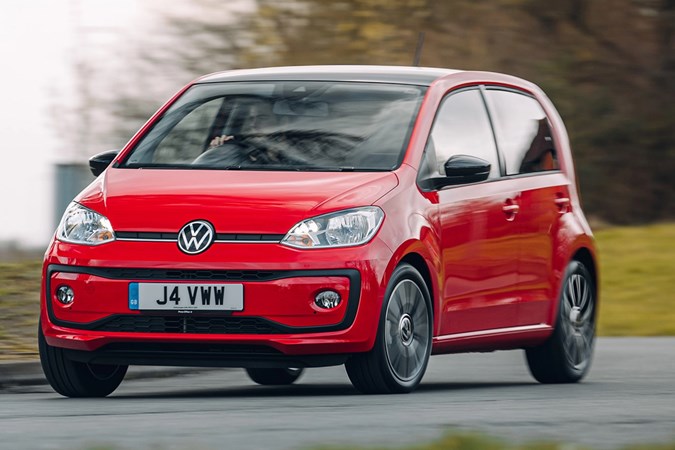

All models come with a 1.0-litre petrol engine that's ideal for new drivers, though there’s also a nippy turbo version and a sporty GTI if you’re after more punch. Just check the trim level before you buy – later entry-level versions like the Take Up don't include a lot of standard equipment.
For a small car the Up is spacious up front with a reasonable amount of leg room for those on the taller side, just bear in mind it only seats four, so it’s not ideal if you often need space for a full group of friends – but as a first car for zipping around town, it’s a brilliant option.
Read our full Volkswagen Up review
Pros
- Great build quality
- Nippy and efficient engine choices
- Loads available used, with plenty of spare parts
Cons
- Pricer than many rivals
- Only four seats
What’s the most affordable car insurance for new driver?
These days, there are lots of insurance policies designed for younger and inexperienced drivers. Some insurers will fit your car with a telematics device, colloquially known as a ‘black box,’ which monitors your driving style and adjusts the price of your policy depending on how aggressive you are with your inputs or how often you speed. In simple terms, the faster you drive, the more you’ll pay.
Can you insure yourself as a named driver on someone else’s policy?
Don’t think you can get around the steep premiums by putting yourself as named driver on a policy under a more experienced friend or family member’s name. It’s considered fraud if the primary policyholder doesn’t ever drive the insured vehicle, or if they drive it less than the named driver.
It’s called ‘fronting’ and, if your insurer catches wind of your scheme, they could refuse to pay for any damage to your car in the event of an accident. In the worst case, you might end up with a criminal record. In addition to the legal issues, fronting means the newly qualified motorist won’t accumulate a no claims bonus, which can help bring down their insurance premiums in the future.
FAQs
-
What is the best engine size for a first car?
If you’re a new driver, a smaller engine is usually the way to go. Something around 1.0 to 1.2 litres strikes a good balance between being affordable to run, easier to insure and still nippy enough for everyday driving.
Larger engines can mean more power – and while that might sound fun, it usually brings higher insurance costs and fuel bills too. For your first car, it’s more about confidence and control than speed. So, start small – your wallet (and your insurer) will thank you. -
What age can I buy my first car?
You can buy a car at any age – even before you’ve passed your test. But to drive it on public roads, you’ll need to be at least 17 and hold a valid provisional driving licence. Plenty of learners buy their first car early to get used to it while taking lessons or to save money on hiring one. Just make sure it’s insured, taxed and has an MOT if you’re planning to practise with a qualified driver.
-
What’s the safest first car?
Out of the cars on our list, the Renault Clio stands out for safety. It earned a five-star Euro NCAP rating when last tested in 2019, scoring among the highest in its class. Its worth noting that the NCAP has tightened up its safety regulations since then, however, anything with 4 or 5 star rating is deemed very safe and the latest Clio is packed with standard safety tech such as clever driver assists like autonomous emergency braking and lane-keeping assist, it’s a reassuring choice for new drivers.
-
What is the best first car?
Here at Parkers, we believe that all new drivers should cut their teeth on a used car before buying something brand new. If you buy something you’re not particularly precious about – ideally something that’s already dented – you'll avoid the ruinously expensive repair costs (and the heartache) when you inevitably rattle the passenger side door down a wall when parking. An old banger will also be cheaper to insure.
Luke Wilkinson is a Deputy Editor of Parkers. He writes news, reviews and best of pages for both Parkers and our sister site, CAR magazine.
Just so you know, we may receive a commission or other compensation from the links on this website - read why you should trust us.


